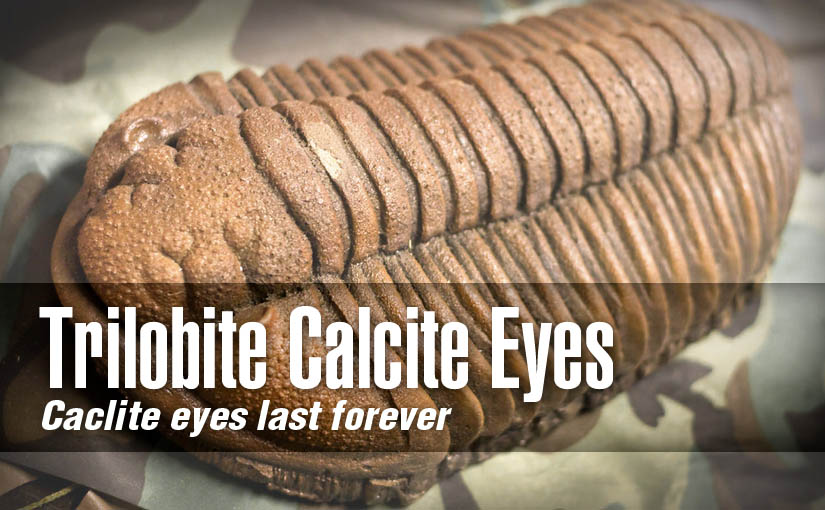It makes great sense to us today that we, or for that matter, so many other living beings around us, have eyes that are made up of organic matter. I’m specifically talking about the lenses of our eyes which are made up of organic material like crystallin. These are squishy, jelly-like biological materials which can change shape as muscles pull them and can focus on objects at different distances. Totally makes sense. But these won’t last long.
Imagine getting extinct, organisms finding our fossils a million years later wouldn’t have the slightest idea of how exactly our eye lenses worked.
Eyes of stone
Whereas the earliest creatures which started seeing, about 400 million years ago, had eyes literally made of stone. Their eyes, unlike any of our eyes would ever be able to do, have been preserved in the fossils we uncover today. [NCBI]
Some of the earliest Arthropods that we know of, belonging to a fossil group called Trilobites had eye lenses that were made up of this transparent mineral Calcite (Calcium carbonate). The closest existing relative of these creatures today are the blue blooded Horseshoe crabs.
The kinds of eyes
Broadly, they were of two types.
In the fossils uncovered scientists have seen eyes of trilobites consisting of literally hundreds to thousands of little calcite lenses packed in a hexagonal grid, forming one of the earliest compound eyes that could actually probably see, not just sense movement of light.
It is believed that the first Trilobites had the “Holochroal” type of eyes. With thousands (more than 15,000) of light receptors each with its own lens packed in hexagonal structure, covered by a single cornea.
The other type had slightly larger lenses, a total of about 700 in each eye and each of them were covered with a separate cornea. These were of the “Schizochroal” type.
And an intermediate type called the abathochroal type, probably of a completely different kind.
A detailed classification of these eye types and their images have been discussed here.
Aberration correction technology from a hundred million years ago
Certainly, owing to the hard structure of Calcite, their bodies wouldn’t have allowed them to change shapes of these hard lenses. However, some Trilobite fossils have been seen to have solved that problem to a certain extent by developing a system of doublet lenses.
Christian Huygens and Rene Descartes were the first scientists who understood how spherical aberration from hard lenses was not very desirable. The invention of a doublet lens system was a great achievement of science in the 1600s which allowed them to beat this natural problem of spherical aberration with a system of two lenses.
Whatever little credit we give it, nature had solved this problem and had developed the Descartes-Huygens correction lens hundreds of million years ago. That is what we have seen in a few Trilobite fossil specimens. A doublet system of calcite lenses allowed them to master their depth of field and take care of the problem of spherical aberration.
The only existing creature that uses such stony eyes are the Brittlestars.

A paper by they authors Fortey and Chatterton talks about these bizarre columnar Trilobite eyes which allowed them a full 360 degree view of the environment around them. Here’s one picture from the paper. [ScienceMag]
